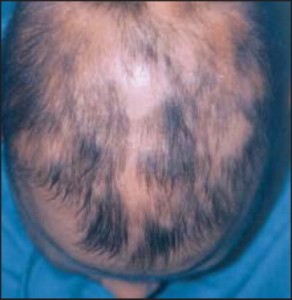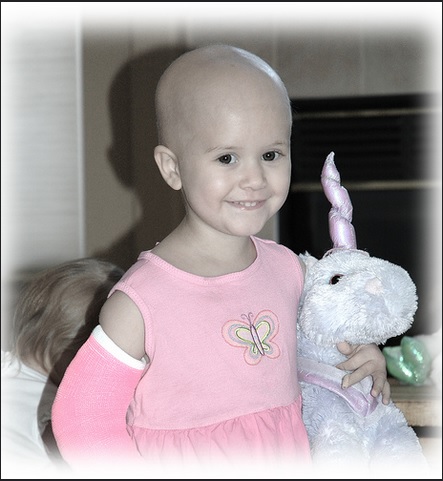Child Hair Loss : What Conditions Cause Hair Loss In Children?
There are a handful of pediatric medical conditions known to result in hair loss. They are:
- Tinea capitis
- Trauma
- Telogen effluvium
- Cancer treatment
- Alopecia areata
Tinea Capitis is the most common reason that hair loss occurs in children, and rate of occurrence continues to increase. This fungal infection can attack the follicles of the eyebrows, eyelashes, and scalp by invading the hair shaft and causing the hair to break off. The condition usually manifests in patchy loss of hair and some broken-off hairs remaining. Without treatment, hair loss can progress considerably. Some children will develop a tender inflammation of the scalp called a kerion.
Trauma is the result of traction, friction, or trichotillomania. Traction and friction can come from certain repetitive hairstyles, such as tight braids, or wearing a hat consistently. Trichotillomania is the habit of plucking or twirling the hair to the point that is weakens and breaks off. This condition is believed to be an obsessive-compulsive disorder resulting from stress, tension, psychological problems, or emotional deficiencies.
Telogen effluvium is another widespread cause of children’s hair loss. This condition is a confusion of the life cycle of the hair follicle, which can be catalyzed by extremely high fever, general anesthesia, excess vitamin A, severe emotional stress, injury, and certain prescription drugs. Any of these catalysts can lead to a disruption of the normal growth cycle of the hair by holding many or all of the hairs in the telogen phase. Partial or total baldness will not appear until several weeks later.
Cancer treatments, such as radiation or chemotherapy, can stop almost all cell growth within the body, including hair cell growth. Thus, hair loss occurs for a finite period of time.

Alopecia areata is an autoimmune disorder wherein the body attacks the hair follicles as if they are foreign matter to be expelled. The result is round or oval patches of baldness, without inflammation or scaling and with no broken hairs. This condition can develop and manifest over night or within a matter of days. The cyclical cycle of hair loss and re-growth with this disorder remains unpredictable for the duration of its course. Many patients who receive proper treatment will see re-growth within a year, and 60% of children will “outgrow” the disorder with no need for treatment.

